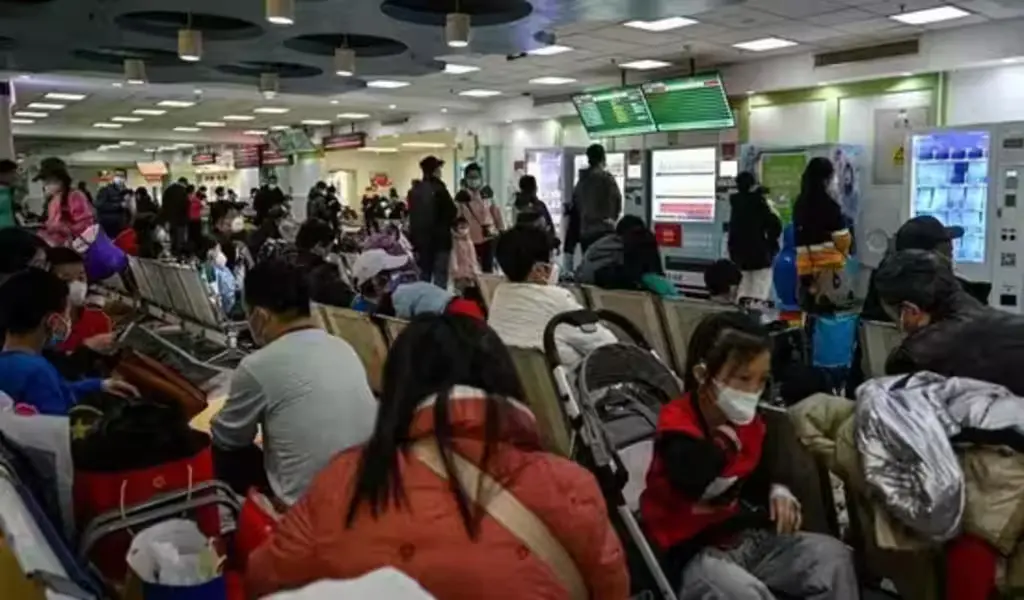(CTN News) – With its vast population and dynamic environment, China faces unique challenges in responding to spikes in cold and flu cases. In this article, we delve into the complexities of China’s public health system, analyze the factors contributing to the recent spike, evaluate the government’s response, and explore the global implications of this situation.
I. Introduction
A. Brief Overview of the Cold and Flu Spike
China is currently grappling with a notable increase in cold and flu cases, posing a significant public health challenge. As we navigate through this topic, it is crucial to understand the underlying factors and assess whether China’s response aligns with best practices.
B. Importance of China’s Response
Given its global interconnectedness, China’s response to health crises holds implications not just for its citizens but also for the international community. Examining the efficacy of their strategies becomes paramount.
II. Understanding China’s Public Health System
A. Overview of China’s Public Health Infrastructure
To comprehend China’s response, we first explore the structure of its public health system. Understanding the intricacies and historical context provides insights into the nation’s ability to tackle health crises.
B. Historical Context of Public Health Crises in China
China has a history of facing public health challenges. Analyzing past responses helps us gauge the nation’s preparedness and adaptability in handling current situations.
III. Factors Contributing to the Spike
A. Environmental Factors
Examining how environmental conditions contribute to the spike sheds light on the preventive measures that can be implemented.
B. Behavioral Factors
Understanding the role of human behavior in disease transmission is crucial for crafting effective public health campaigns.
C. Impact of Urbanization on Disease Transmission
With rapid urbanization, diseases can spread more easily. Evaluating this impact aids in tailoring responses to specific regions.
IV. Analyzing China’s Response
A. Initial Government Measures
An in-depth analysis of the government’s initial measures reveals the strengths and weaknesses of their response strategy.
B. Public Health Campaigns
The effectiveness of public health campaigns in influencing behavior and mitigating the spread of diseases is explored.
C. Evaluating the Effectiveness of Response Strategies
Measuring the success of implemented strategies is essential to adapt and improve ongoing efforts.
V. Challenges Faced by China
A. Resource Constraints
Examining how resource limitations impact the ability to respond effectively highlights areas for improvement.
B. Communication Gaps
Identifying gaps in communication helps in addressing misinformation and fostering trust.
C. Balancing Economic Concerns with Public Health
Navigating the delicate balance between economic interests and public health is crucial for sustained recovery.
VI. Global Implications
A. Potential Spread Beyond China
Assessing the risk of the disease spreading globally emphasizes the need for international collaboration.
B. Collaboration with International Health Organizations
Analyzing China’s collaboration with international health organizations unveils opportunities for shared learning and support.
VII. Lessons Learned
A. Identifying Successful Strategies
Recognizing successful strategies from the response provides a roadmap for future crises.
B. Addressing Shortcomings for Future Preparedness
Learning from mistakes and addressing shortcomings ensures a more resilient future.
VIII. Public Perception and Trust
A. Impact of the Response on Public Trust
Evaluating how the response influences public trust is vital for maintaining social cohesion.
B. Strategies for Rebuilding Trust
Exploring strategies to rebuild trust post-crisis is essential for long-term public health goals.
IX. Comparisons with Other Nations
A. Contrasting Responses from Different Countries
Comparing China’s response with other nations offers valuable insights into effective strategies.
B. Learning from Global Best Practices
Adopting successful practices from around the world enhances preparedness for future challenges.
X. The Role of Technology in Mitigating Spread
A. Contact Tracing Apps and Their Effectiveness
Analyzing the role of technology, particularly contact tracing apps, in mitigating the spread provides insights into future technological interventions.
B. Utilizing Data Analytics for Predictive Modeling
Harnessing data analytics for predictive modeling enhances the ability to foresee and prepare for future outbreaks.
XI. The Economic Toll
A. Impact on Businesses and Industries
Understanding the economic repercussions of the spike aids in developing targeted recovery strategies.
B. Strategies for Economic Recovery Post-Pandemic
Exploring strategies for economic recovery ensures a holistic approach to national well-being.
XII. Community Engagement
A. Importance of Community Involvement
Emphasizing the role of community engagement in disease prevention fosters a sense of collective responsibility.
B. Building Resilience at the Grassroots Level
Empowering communities to build resilience contributes to a more robust public health ecosystem.
XIII. The Need for International Cooperation
A. Addressing Global Health Challenges Collectively
Stressing the importance of international cooperation in tackling global health challenges.
B. Strengthening Diplomatic Ties for Future Collaborations
Fostering diplomatic ties facilitates smoother collaboration during crises.
XIV. Future Preparedness
A. Investing in Research and Development
Exploring the need for continuous investment in research and development to stay ahead of emerging health threats.
B. Creating a Resilient Public Health Infrastructure
Discussing the importance of building a resilient public health infrastructure that can withstand unforeseen challenges.
XV. Conclusion
In conclusion, China’s response to the recent cold and flu spike is a complex interplay of various factors, from public health infrastructure to economic considerations. By examining each aspect thoroughly, we gain insights into what worked well and where improvements can be made. It is evident that the lessons learned from this experience will shape future preparedness and responses to global health challenges.






